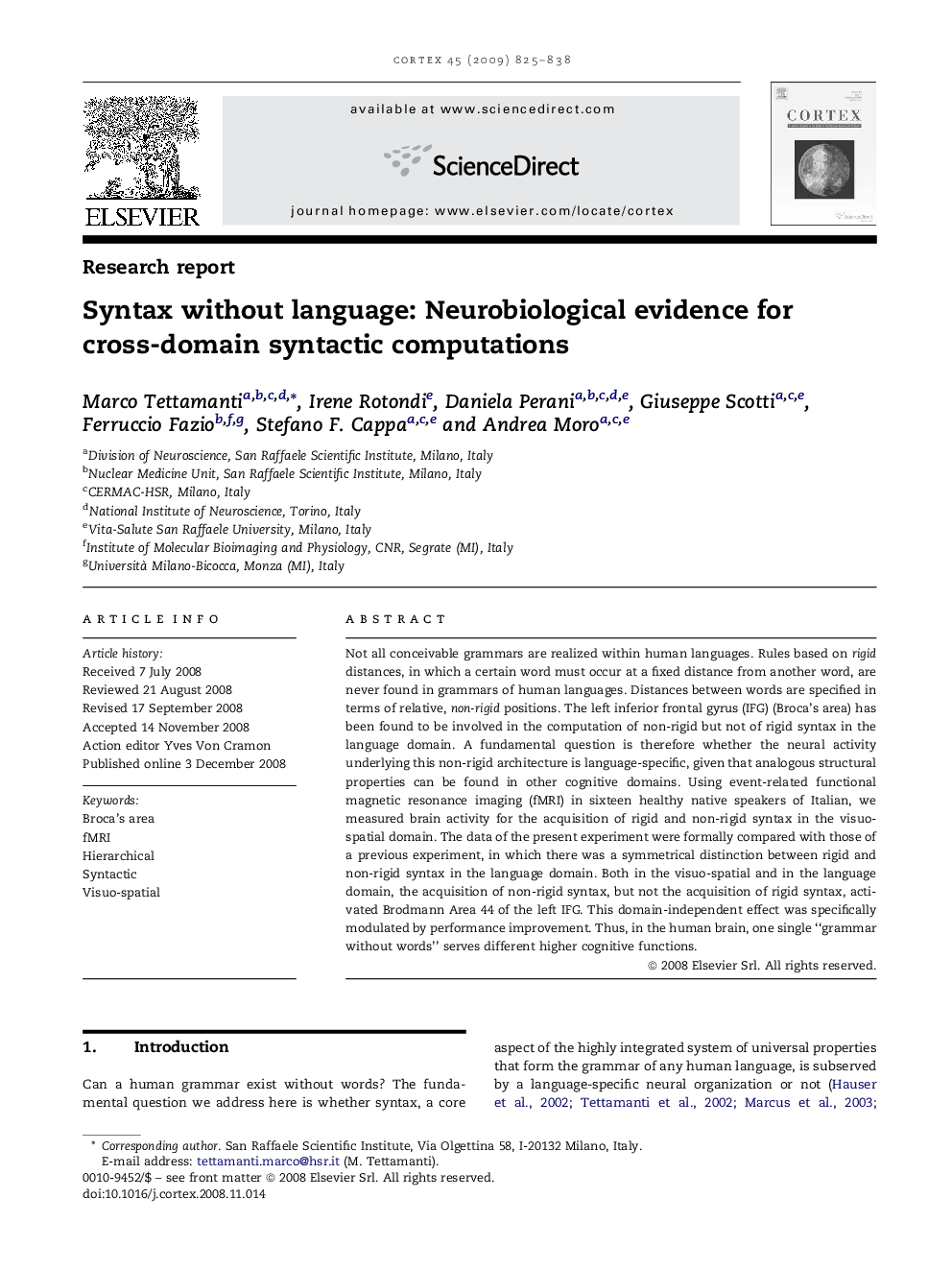| Article ID | Journal | Published Year | Pages | File Type |
|---|---|---|---|---|
| 942493 | Cortex | 2009 | 14 Pages |
Not all conceivable grammars are realized within human languages. Rules based on rigid distances, in which a certain word must occur at a fixed distance from another word, are never found in grammars of human languages. Distances between words are specified in terms of relative, non-rigid positions. The left inferior frontal gyrus (IFG) (Broca's area) has been found to be involved in the computation of non-rigid but not of rigid syntax in the language domain. A fundamental question is therefore whether the neural activity underlying this non-rigid architecture is language-specific, given that analogous structural properties can be found in other cognitive domains. Using event-related functional magnetic resonance imaging (fMRI) in sixteen healthy native speakers of Italian, we measured brain activity for the acquisition of rigid and non-rigid syntax in the visuo-spatial domain. The data of the present experiment were formally compared with those of a previous experiment, in which there was a symmetrical distinction between rigid and non-rigid syntax in the language domain. Both in the visuo-spatial and in the language domain, the acquisition of non-rigid syntax, but not the acquisition of rigid syntax, activated Brodmann Area 44 of the left IFG. This domain-independent effect was specifically modulated by performance improvement. Thus, in the human brain, one single “grammar without words” serves different higher cognitive functions.
